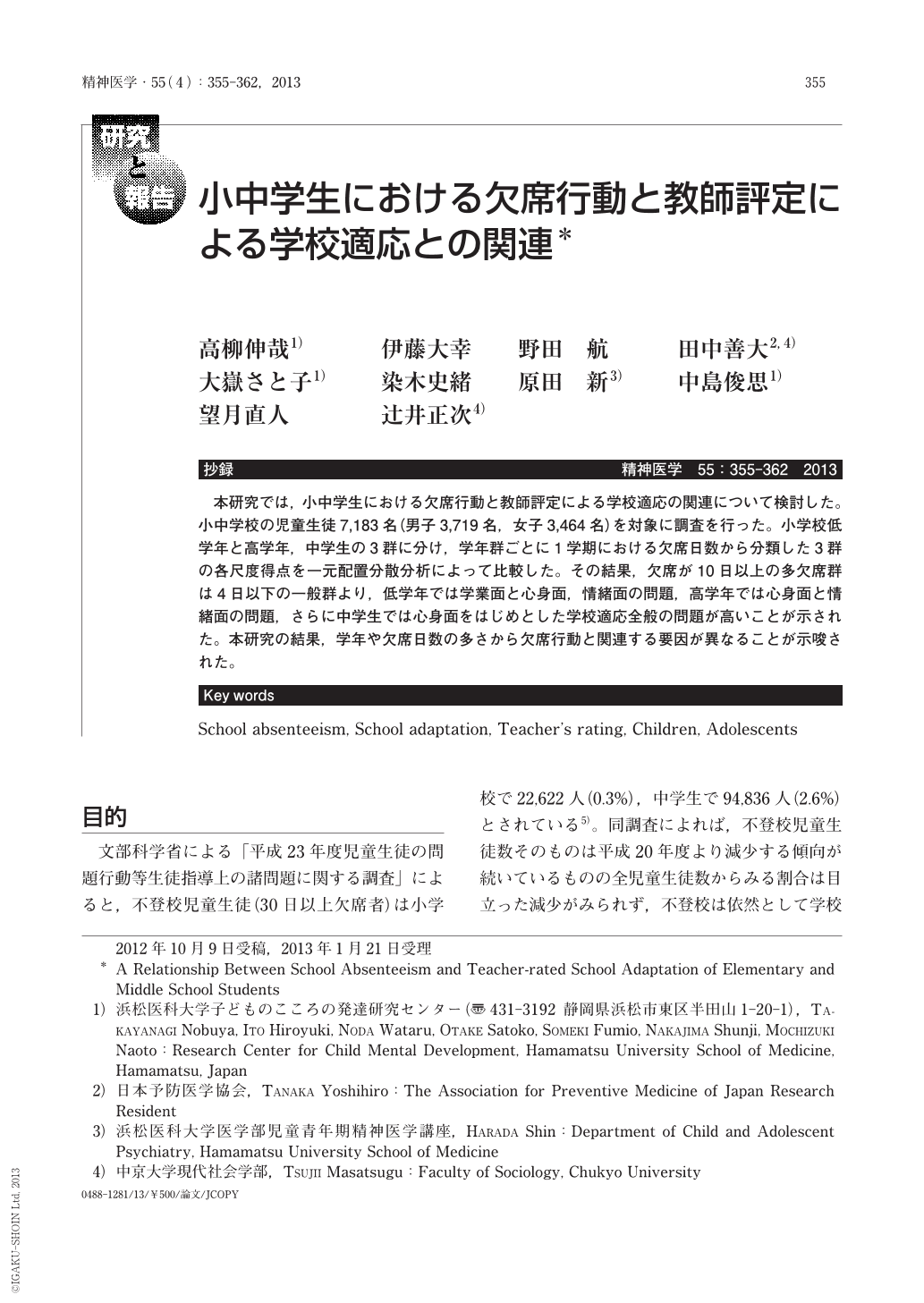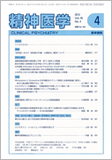Japanese
English
- 有料閲覧
- Abstract 文献概要
- 1ページ目 Look Inside
- 参考文献 Reference
抄録
本研究では,小中学生における欠席行動と教師評定による学校適応の関連について検討した。小中学校の児童生徒7,183名(男子3,719名,女子3,464名)を対象に調査を行った。小学校低学年と高学年,中学生の3群に分け,学年群ごとに1学期における欠席日数から分類した3群の各尺度得点を一元配置分散分析によって比較した。その結果,欠席が10日以上の多欠席群は4日以下の一般群より,低学年では学業面と心身面,情緒面の問題,高学年では心身面と情緒面の問題,さらに中学生では心身面をはじめとした学校適応全般の問題が高いことが示された。本研究の結果,学年や欠席日数の多さから欠席行動と関連する要因が異なることが示唆された。
We examined the relationship between school absences and teacher-rated school adaptation of elementary and middle school students using an entire community sample in a suburban city (n=7,183). The students were divided into 3 groups:grades 1-3, grades 4-6, and middle school students. Results revealed that students in grade 1-3 with absenteeism (i.e., absent from school for more than 10 days per semester) showed more significant problems in learning, psychosomatic health, and emotion than students who were absent for less than 4 days (i.e., control group). Similarly, students in grades 4-6 with absenteeism exhibited more significant problems in psychosomatic health and emotion than controls. With regard to students in middle school, both high absences (i.e., absent for 5-9 days) and absenteeism groups presented significant psychosomatic health and interpersonal problems compared to controls;however, the absenteeism group exhibited more severe problems in learning, emotion, and antisocial behavior than the high absences group, and the control group showed the fewest problems. These results indicate that more absences strengthen the relationship between school absences and school adaptation. Moreover, factors that correlate with absenteeism were different for different age group. Future studies that identify the factors that influence school absences in each grade are warranted.

Copyright © 2013, Igaku-Shoin Ltd. All rights reserved.


